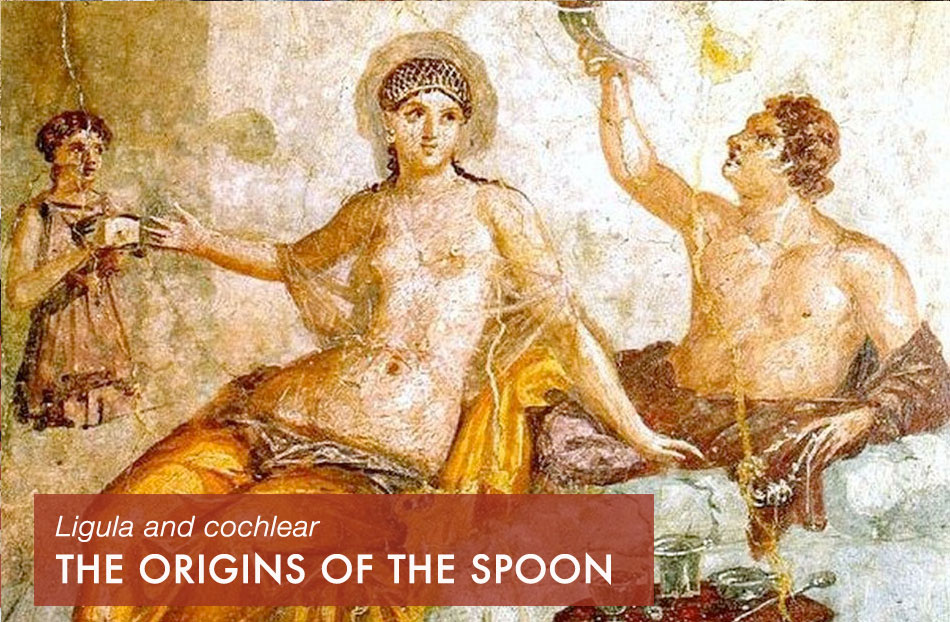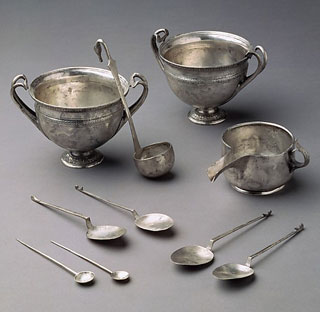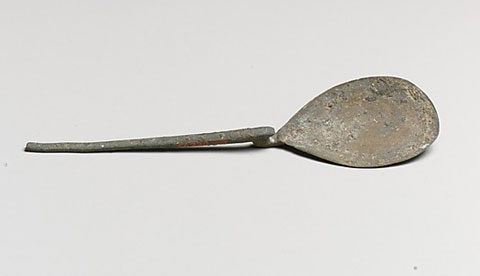

Set of spoons and cups, 1st century A.D. New York, Metropolitan Museum of Art
Spoon, 1st–2nd century A.D. New York, Metropolitan Museum of Art
Top: Banquet scene in Pompeii, 1st century A.D. Naples, Museo Archeologico Nazionale
While not disdaining the use of the spoon, the Romans primarily used clay or metal cups to consume broths and liquid dishes. The spoon, on the other hand, was deemed particularly useful for eating eggs and for placing dry food in the mouth (the type of food we eat with a fork today). In fact food was often served in small pieces, making it easy to pick up with a spoon.
The Latin language encompasses the ligula and the cochlear. The most similar to the modern spoon was the ligula, with quite a large bowl, while the cochlear stood out for its very long tapered handle, so that it could be used to open shells and extract molluscs, and its rather small bowl.
The spoons found at the banquets of the rich were forged in silver and often decorated or rendered unique with engraved mottos, such as the famous Utere felix (use it happily), perhaps the first "Bon appetit" in history.

